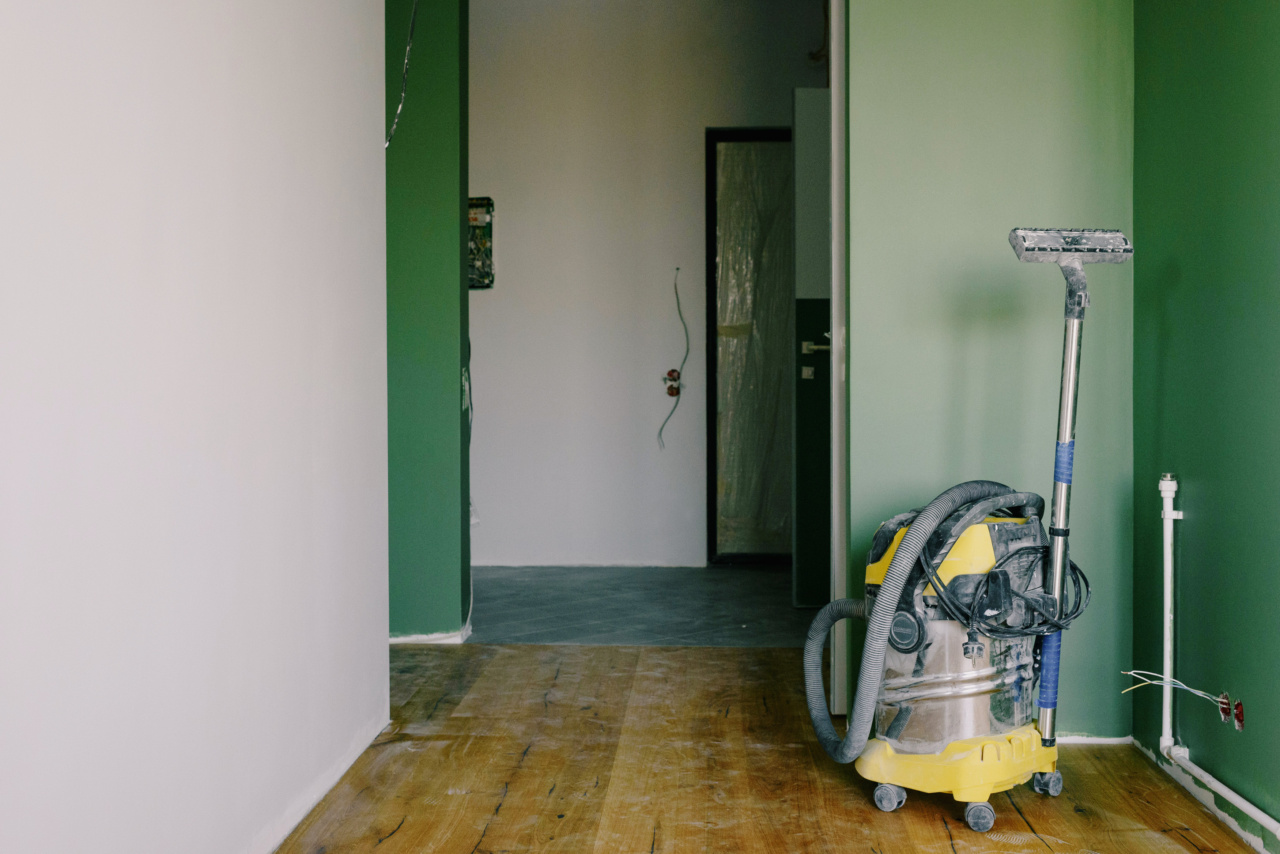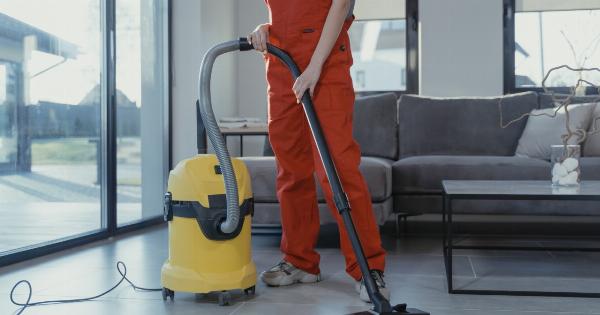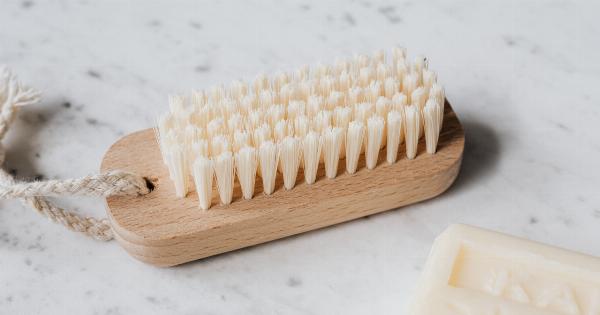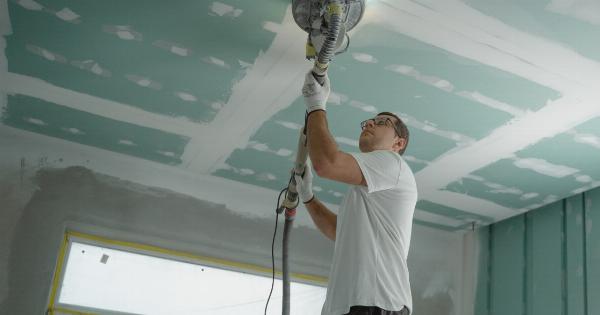Allergies are a common problem that affect millions of people worldwide. One of the major culprits behind allergies is dust and allergens present in our living spaces.
These microscopic particles can trigger allergic reactions, leading to various symptoms such as sneezing, itching, congestion, and even asthma attacks. To combat this issue, many individuals rely on the use of vacuum cleaners to keep their homes clean and free from allergens.
The Importance of Vacuum Cleaners
Vacuum cleaners have become an essential household appliance for maintaining cleanliness and reducing allergens. They work by creating suction that pulls in dust, dirt, pet dander, and other allergens from surfaces like carpets, rugs, and furniture.
By removing these particles, vacuum cleaners help minimize the presence of allergens in our living spaces.
Types of Vacuum Cleaners
There are several different types of vacuum cleaners available in the market, each with its own set of advantages and disadvantages. Here are a few commonly used types:.
1. Upright Vacuum Cleaners
Upright vacuum cleaners are a popular choice for many households. They are generally powerful and easy to maneuver.
These vacuums are designed to be pushed along floors and carpets, making them effective in removing dust and allergens embedded in these surfaces.
2. Canister Vacuum Cleaners
Canister vacuum cleaners consist of a canister that houses the motor and a long hose connected to a wand and cleaning head.
These vacuums offer excellent versatility and maneuverability, allowing users to reach and clean difficult-to-access areas such as stairs, upholstery, and tight corners.
3. Stick Vacuum Cleaners
Stick vacuum cleaners are lightweight and slim, making them ideal for quick cleaning tasks and smaller living spaces.
While they may not have the same power as upright or canister vacuums, they are convenient for daily maintenance and removing surface-level allergens.
4. Robot Vacuum Cleaners
Robot vacuum cleaners are autonomous devices that navigate around your home, cleaning floors and carpets automatically. These vacuums are equipped with sensors to avoid obstacles and can be controlled remotely.
While they may not be as powerful as traditional vacuum cleaners, they offer convenience and can be programmed to operate even when you’re not at home.
The Role of Vacuum Cleaners in Allergy Management
Regular vacuuming plays a crucial role in managing allergies and reducing exposure to allergens. Here’s how vacuum cleaners contribute:.
1. Dust Mite Control
Dust mites are one of the most common allergens found in homes. These microscopic creatures thrive in warm and humid environments, often infiltrating mattresses, pillows, carpets, and upholstered furniture.
Vacuuming regularly helps remove dust mites and their waste, minimizing the risk of allergic reactions.
2. Pet Allergen Reduction
Many individuals are allergic to pet dander, the microscopic flecks of skin shed by animals. Vacuum cleaners can effectively remove pet dander trapped in carpets, furniture, and other surfaces, providing relief for pet-allergic individuals.
3. Pollen and Outdoor Allergen Removal
During certain times of the year, outdoor allergens such as pollen can find their way into our homes.
Vacuuming floors and using attachments on upholstered furniture and curtains can help remove these allergens, preventing them from triggering allergic reactions.
4. Mold and Mildew Prevention
Moisture-prone areas like bathrooms and basements are susceptible to mold and mildew growth. Vacuuming these areas and using specialized attachments can help remove mold spores, preventing their spread and reducing the risk of mold-related allergies.
Finding the Right Vacuum Cleaner for Allergies
When choosing a vacuum cleaner to combat allergies, there are a few factors to consider:.
1. High-Efficiency Particulate Air (HEPA) Filters
HEPA filters are designed to capture 99.97% of particles as small as 0.3 microns, including most allergens. Vacuums equipped with HEPA filters are highly effective in removing allergens from surfaces and preventing their release back into the air.
2. Sealed System
A vacuum cleaner with a sealed system ensures that sucked-in allergens are securely trapped within the vacuum, minimizing the chance of these particles escaping back into the living space.
This feature is particularly important for individuals with asthma or severe allergies.
3. Suction Power and Brush Quality
Opt for a vacuum cleaner with strong suction power and high-quality brushes. This combination ensures effective removal of allergens from various surfaces, including carpets, rugs, upholstery, and hard floors.
4. Ease of Maintenance and Cleaning
Consider the ease of maintenance and cleaning when selecting a vacuum cleaner. Emptying the dust canister or replacing bags should be a hassle-free process to prevent accidental exposure to allergens.
5. Noise Levels
Some vacuum cleaners can be quite noisy, which can cause disturbance and discomfort. Look for models that offer noise-reduction features if noise is a concern for you.
Maintaining a Clean and Allergen-Free Home
In addition to using a vacuum cleaner specifically designed for allergies, a few other practices can help maintain a clean and allergen-free home:.
1. Regular Dusting and Mopping
Dusting surfaces and mopping floors using microfiber cloths or mop heads can effectively remove allergens and prevent them from becoming airborne.
2. Washing Bedding and Fabrics
Washing bedding, curtains, and other fabrics regularly in hot water can help eliminate dust mites and allergens. Using hypoallergenic laundry detergents is also beneficial for individuals with sensitive skin or allergies.
3. Minimizing Clutter
Reducing clutter in your home can make cleaning and vacuuming more efficient. Clutter tends to collect dust and allergens, making it harder to maintain a clean living space.
4. Allergen-Proof Mattress and Pillow Covers
Investing in allergen-proof mattress and pillow covers creates a barrier against dust mites and their allergens. These covers are specially designed to block allergen particles, providing added protection during sleep.
The Future of Vacuum Cleaners
The technology behind vacuum cleaners continues to advance, aiming to provide better cleaning solutions for allergy sufferers. Some of the emerging trends in vacuum cleaner technology include:.
1. Smart Connectivity
Smart vacuum cleaners can be controlled and programmed remotely via smartphone applications. They offer features like scheduling, zone cleaning, and even integration with voice-controlled assistants.
2. Advanced Filtration Systems
New filtration systems are being developed to improve allergen removal and air quality even further. These advancements aim to capture a broader range of allergens and pollutants, providing cleaner air during and after vacuuming.
3. Improved Battery Life
For cordless vacuum cleaners, longer battery life is a desirable feature. Manufacturers are working on developing more efficient batteries to extend runtime and minimize interruptions during cleaning.
Conclusion
Vacuum cleaners play a crucial role in managing allergies and reducing exposure to allergens present in our living spaces.
By choosing the right vacuum cleaner with features like HEPA filters and sealed systems, individuals can significantly minimize the risk of allergic reactions and improve their overall quality of life. Additionally, adopting good cleaning practices and maintaining a clutter-free home can further enhance the effectiveness of vacuuming in creating an allergen-free environment.
As technology continues to advance, future vacuum cleaners hold the promise of even better cleaning solutions for allergy sufferers.





























